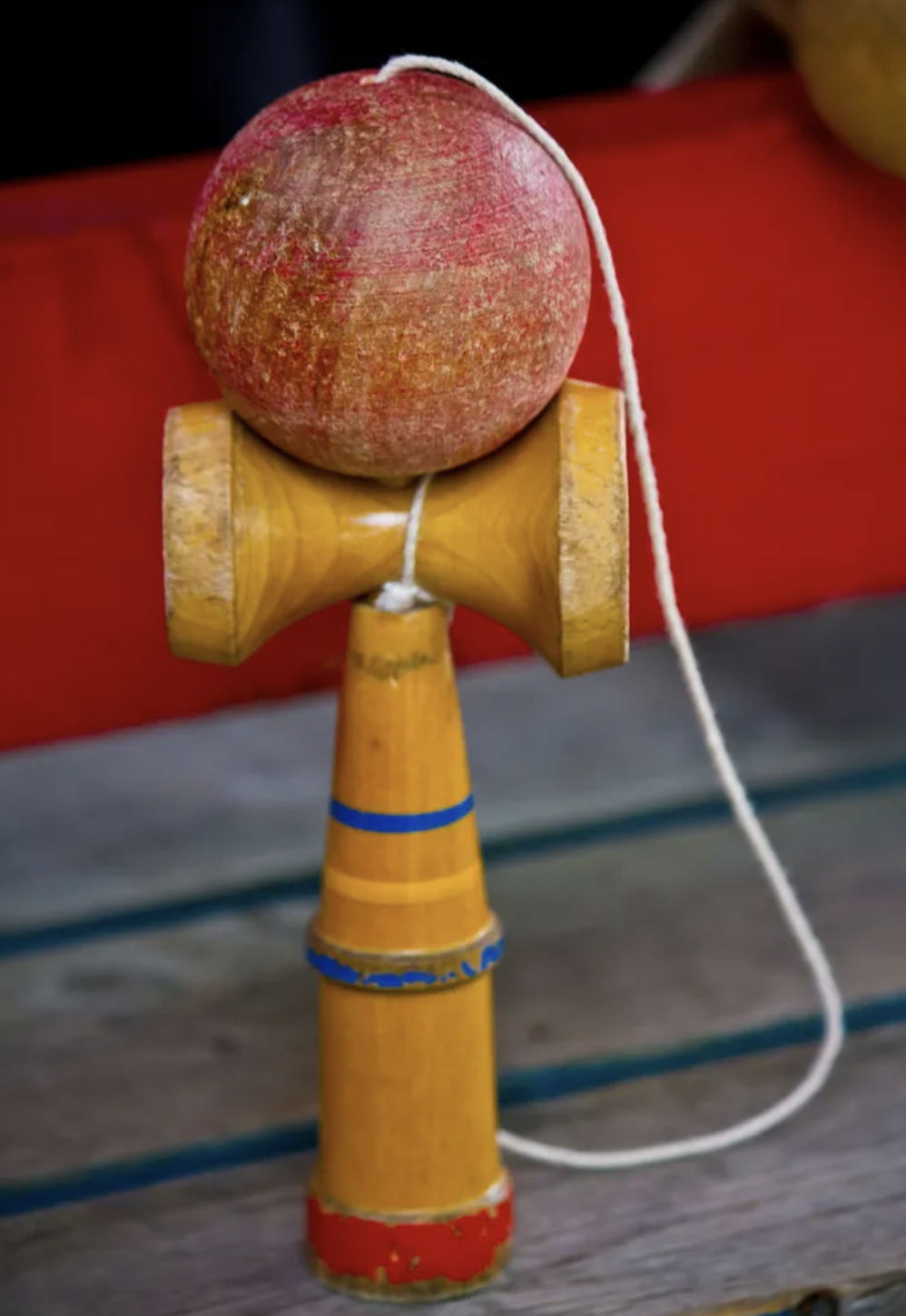Kendama is very familiar to Japanese people. Therefore, many people think that Kendama is a toy made in Japan…but actually, it is not.
In this article, we will introduce the origin and history of Kendama.
Origin of Kendama
Kendama is a traditional toy consisting of a cross-shaped “sword” handle and a ball with a hole in it.
There are theories about the origin of Kendama in various parts of the world, such as China, Mexico, and Africa, and it is not known exactly where Kendama originated, but the most popular theory is that the French word “bilboquet” spread around the world and was introduced to Japan.
Bilboquet” is a French word, “bil” meaning “ball” and “boquet” meaning “small tree,” and is a toy very similar to Kendama.
The earliest record of “bill-bokeh” is in16th-century French documentation in the reign of King Henri III, in which a man named Pierre de l’Estoire wrote, “In the summer of 1585, children often played bill-bokeh on street corners, and even the king began to play with it.”
History of Kendama
Kendama is said to have been introduced to Japan during the Edo period (1603-1868). The earliest record of kendama is a document titled “Kensaraesumazue” (1809), which explains in text and diagrams how to play the game as “sukutamama ken”.
The first recorded mention of the word “kendama” is in 1830 in the essay “Kiyu Shoran” written by Nobusetsu Kitamura, who compiled the customs, songs, and dances of the late Edo period (1603-1868), and introduced the word “Kendama” in the Chinese character “拳玉”.
It was not cross-shaped like a modern version of Kendama, but rather a stick with a cup or dish-like portion attached to the top and bottom, into which balls were placed for play.
The game of Kendama was also played by adults at a drinking party at that time; if someone didn’t play Kendama, they would be punished with a drink.
In 1876, during the Meiji period (1868-1912), the Ministry of Education introduced Kendama as “sake cups and balls” in a children’s education manual, and it became popular as a children’s game.
The modern Kendama, also known as the “Nichigetsu Ball,” was created in Kure City, Hiroshima Prefecture, in 1918 by a man whose name was of Hamatsugu Egusa.
The name “nichigetsu-ball” comes from the fact that a plate dug in the shape of a crescent moon receives a ball like the sun, and it rapidly became popular among children, becoming a very familiar toy for them after World War II.
On May 5, 1975, the Nihon Kendama Kyokai (Japan Kendama Association) was founded with the aim of passing down the art of kendama.
The association established rules for kendama and began to conduct kyu and dan certification examinations, giving kendama, once just a pastime, a sporting aspect. The association also trains kendama instructors, organizes various tournaments, and promotes kendama overseas,by making kendama a bridge for international exchange.




Comments